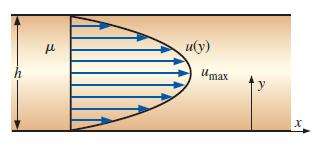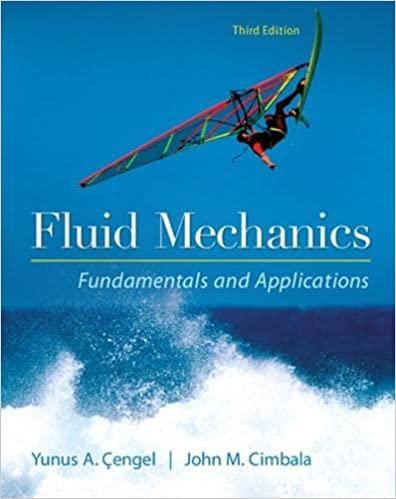Consider the steady, laminar, fully developed, two dimensional Poiseuille flow of Prob. 795. The maximum velocity u
Question:
Consider the steady, laminar, fully developed, two dimensional Poiseuille flow of Prob. 7–95. The maximum velocity umax occurs at the center of the channel.
(a) Generate a dimensionless relationship for umax as a function of distance between plates h, pressure gradient dP/dx, and fluid viscosity μ.
(b) If the plate separation distance h is doubled, all else being equal, by what factor will umax change?
(c) If the pressure gradient dP/dx is doubled, all else being equal, by what factor will umax change?
(d) How many experiments are required to describe the complete relationship between umax and the other parameters in the problem?
Data from Problem 7–95
Consider steady, laminar, fully developed, two dimensional Poiseuille flow—flow between two infinite parallel plates separated by distance h, with both the top plate and bottom plate stationary, and a forced pressure gradient dP/dx driving the flow as illustrated in Fig. P7–95. (dP/dx is constant and negative.) The flow is steady, incompressible, and two-dimensional in the xy-plane. The flow is also fully developed, meaning that the velocity profile does not change with downstream distance x. Because of the fully developed nature of the flow, there are no inertial effects and density does not enter the problem. It turns out that u, the velocity component in the x-direction, is a function of distance h, pressure gradient dP/dx, fluid viscosity μ, and vertical coordinate y. Perform a dimensional analysis (showing all your work), and generate a dimensionless relationship between the given variables.
FIGURE P7–95

Step by Step Answer:

Fluid Mechanics Fundamentals And Applications
ISBN: 9780073380322
3rd Edition
Authors: Yunus Cengel, John Cimbala





